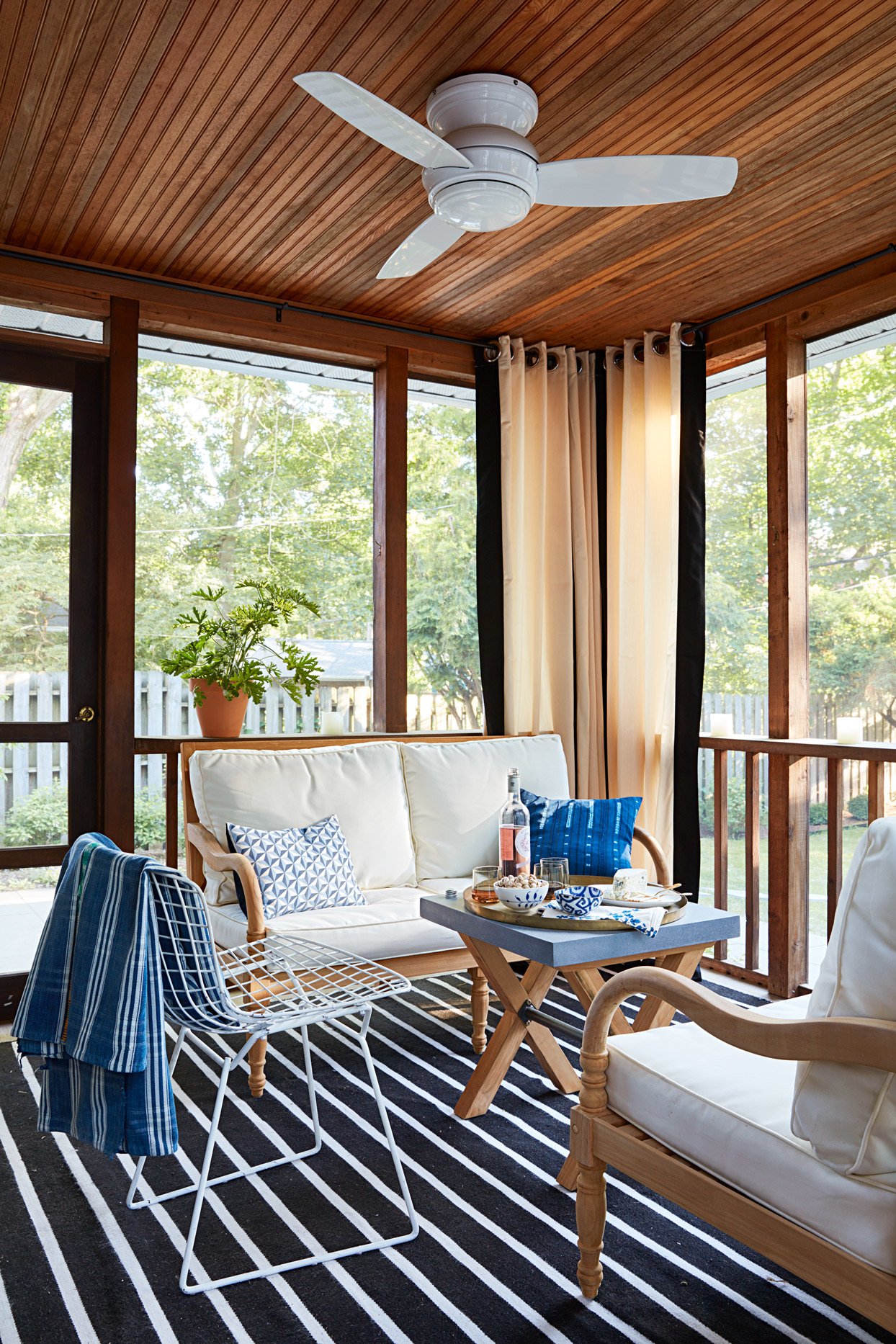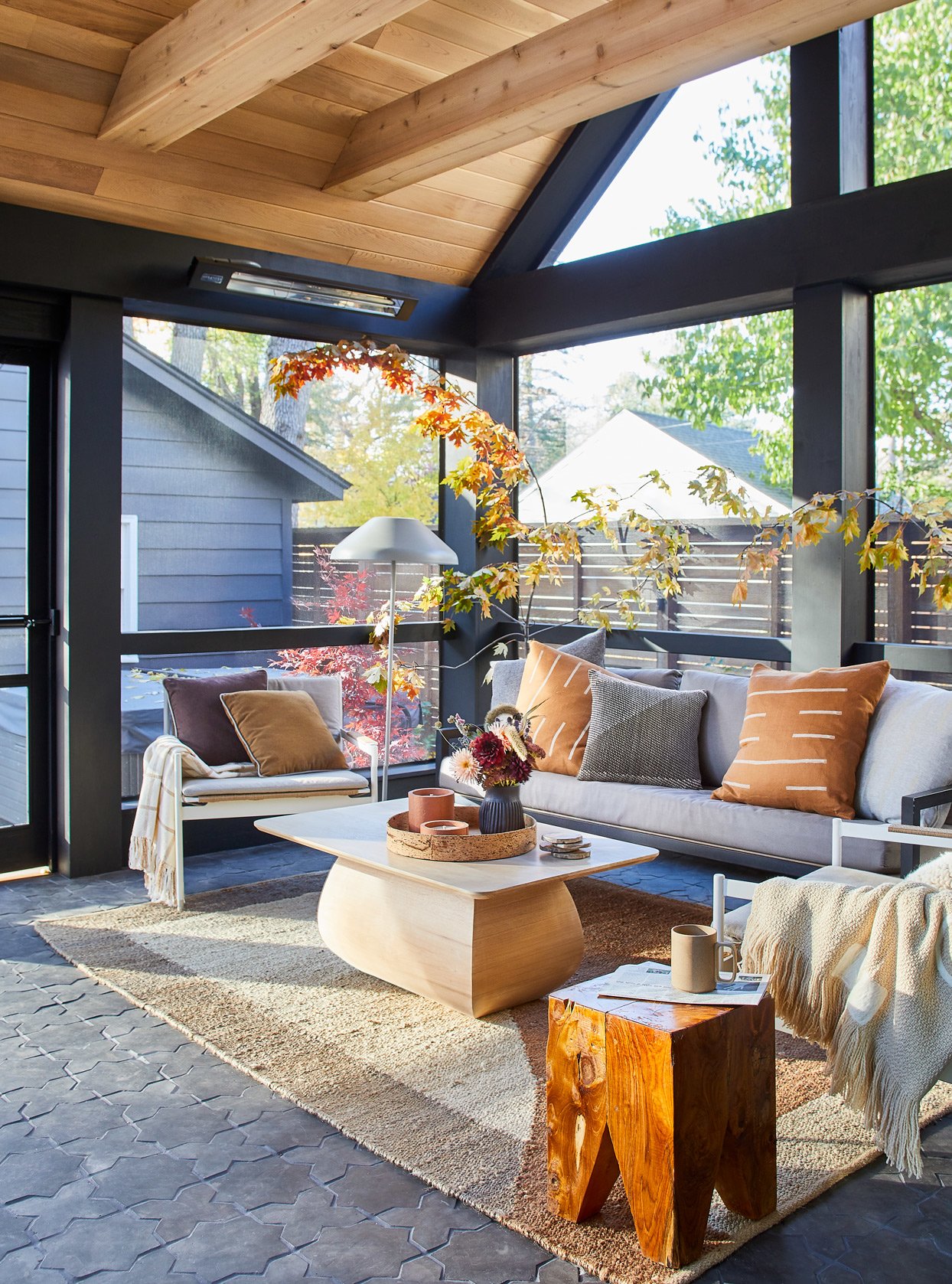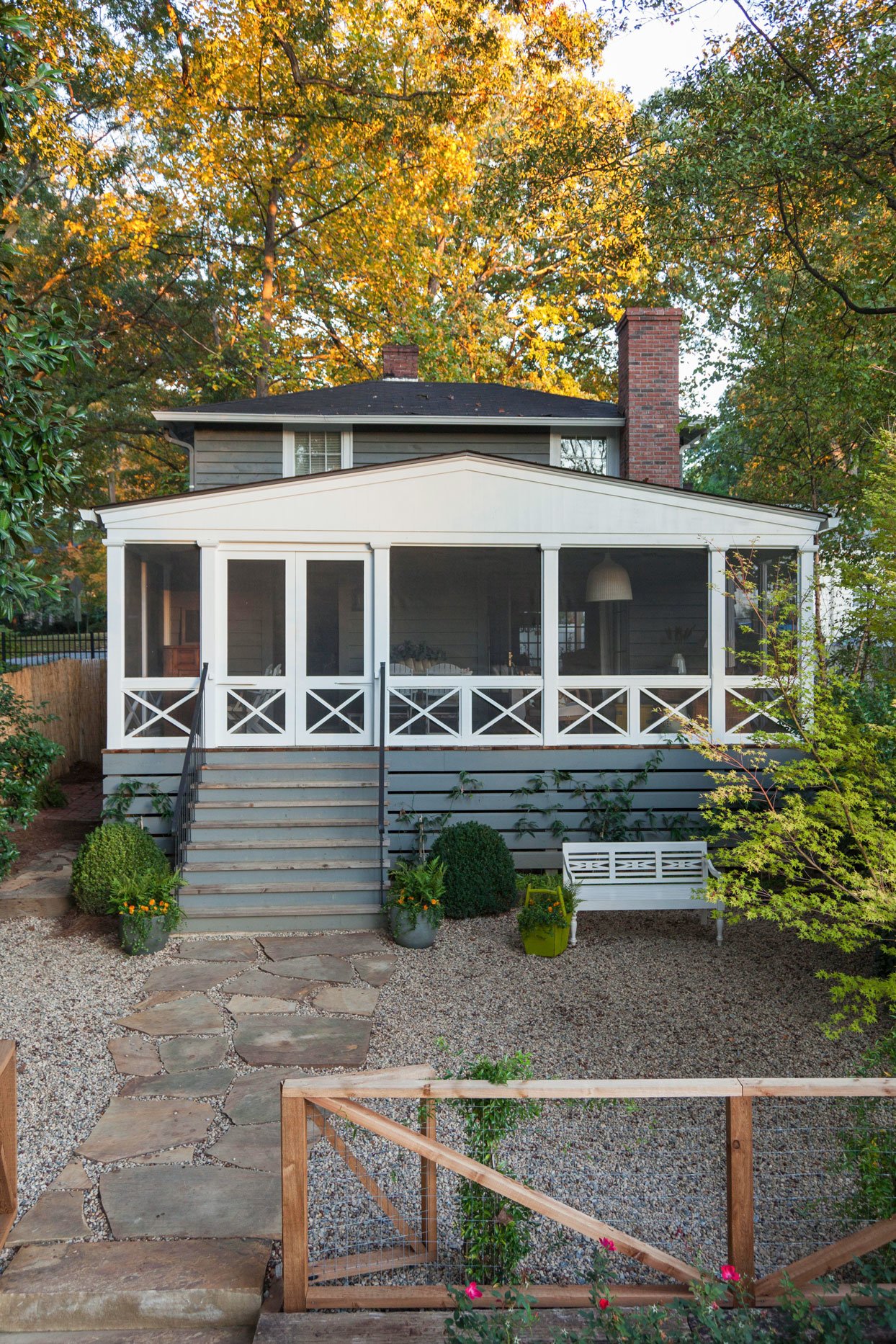A custom-built screen porch gives you an outdoor living space you can enjoy almost year-round. It's the ideal setting for a cool lemonade on a hot summer afternoon or a warm mug of coffee on a crisp autumn morning. Your screen porch can serve as a quiet, private spot to start your days and an insect-free entertaining space in the evenings.
Depending on your climate and lifestyle, you might prefer a true screen room with no windows or a three-season room with windows that can open and close. Either version can be an attractive way to extend your living space. With careful planning and a few design tricks, you can create an ideal screen porch that bridges indoors and out. Use the following tips on planning and designing a screen porch to get started.
Best Location for Your Screen Porch
Deciding where to place your screen room can be crucial to your enjoyment of it later. First, consider the climate. A porch with a southern exposure is likely to get too hot in southern regions, whereas a northern exposure will likely be too chilly for homes in the North.
You should also consider the view from the screen porch and how secluded the area is from neighbors or the street. Take into account the direction the breeze usually comes from, and think about where you might place an outdoor grill. You don't want smoke to blow into your screen room on barbecue nights.
It's best to place a screen porch near rooms that you use often, such as the kitchen. This makes eating meals out on the porch convenient. However, if you'll be blocking the kitchen's only source of natural light, you might want to place it in front of an adjacent mudroom or laundry area.
How to Design a Screen Porch
When determining the size of your screen room, decide whether you want only a sitting area or a place to dine, too. Keep in mind that a long, narrow porch (at least 8 feet wide) can provide adjacent spaces for seating and dining and lets more light into the house than a square room.
If possible, build a room that is open on three sides. This increases the feeling of sitting outdoors (sans bugs) and helps air circulate. A peaked roof will allow you to install high windows, which also help with air circulation, and provides space for a ceiling fan. A gas or wood-burning fireplace will ensure the room is comfortable on chilly spring and fall evenings.
Ideas for Screen Porch Windows
Screen porch windows that can be removed and clipped back in during cooler weather also extend the screen room's use. However, they can limit design possibilities. In a room that's fully outfitted with screens, you aren't limited by window sizes and can use larger pieces of screening to provide more of an outdoor feeling. However, this will also require all-weather furniture and lead to more dirt and dust in your screen room.
Screen Porch Decorating Ideas
When decorating a screen porch, first determine how the room will typically be used. A screen room dedicated to entertaining will need enough comfortable seating for guests and a coffee table or a few side tables for setting beverages or snacks. Add warmth and personality to a screen porch with a large indoor-outdoor area rug and cozy pillows or throws on furniture. Be sure fabrics are outdoor-safe if the porch has no windows. If you plan to dine out on the screen porch, make space for a table and chairs. When decorating a small screen porch, keep in mind that a circular pedestal table, as opposed to a rectangular one, will be easier to navigate around in a tight space.
Choosing Screen Porch Materials
Building materials will have a large impact on the style and cost of your screen porch. Wood is a popular flooring choice for these indoor-outdoor spaces. Cedar is more expensive than some types, but it will stand up well to the elements. Plastic decking made from recycled materials is typically more expensive than wood, but it's virtually maintenance-free.
If the screen room is built on grade (at ground level), it can be built on a concrete slab, which is the least expensive flooring option. Staining the concrete adds a more upscale look. Stone, slate, or porcelain tiles also are good choices for screen porch flooring. On the walls, beaded-board paneling provides a cottage look, while wood produces a more rustic appearance.
The overall cost of a new screen porch can vary greatly, but for a starter 12x12-foot screen room that matches the style of the house, expect to pay $5,000 to $10,000. For a custom look, you could pay up to $25,000 or more.



![A Tranquil Jungle House That Incorporates Japanese Ethos [Video]](https://asean2.ainewslabs.com/images/22/08/b-2ennetkmmnn_t.jpg)









